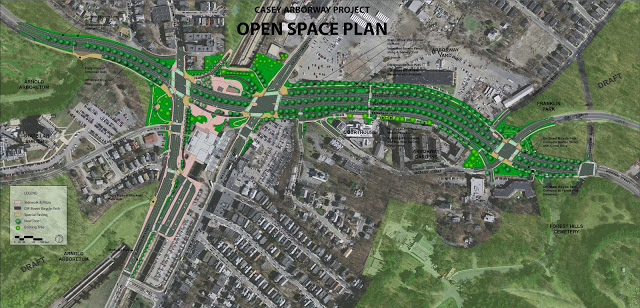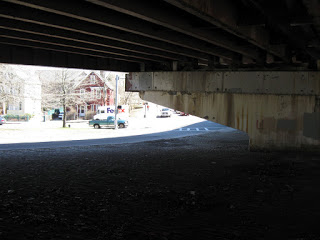
This month, Boston is demolishing a monument to 1950s-era car infrastructure: The Casey Overpass, a short elevated road built in 1955 to whisk drivers over the Forest Hills MBTA station in Jamaica Plain without encountering any pesky things like intersections or pedestrians.
The last car drove over the decrepit 1,600-foot-long structure just a few days ago, and construction crews have begun taking it apart. Soon the residents of Forest Hills will say goodbye forever to the hulking eyesore blighting their neighborhood.

In its place, the state will construct an at-grade street with three lanes in each direction and a protected bike lane.
The road removal encountered its share of resistance along the way, including from a local bike shop owner, but the arguments for the teardown won out.
Removing the overpass will enable the creation of a more walkable street grid and reintegrate the neighborhood with Boston's beloved "Emerald Necklace," the Frederick Law Olmsted-designed park system.
Tearing down the overpass also saved a lot of money compared to rebuilding it -- about $21 million, according to the Boston Globe.





